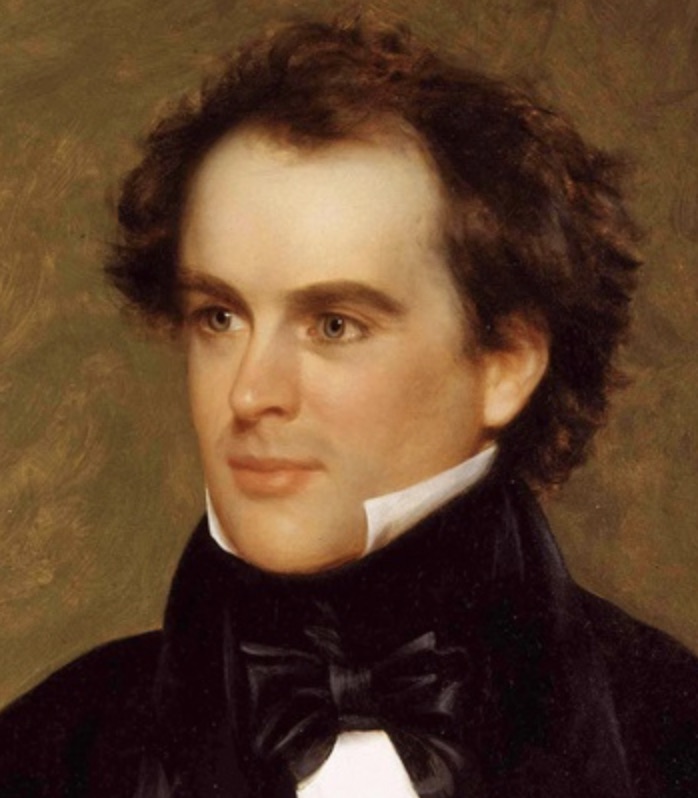
Nathaniel Hawthorne was born on July 4, 1804, into a Puritan family in Salem, Massachusetts, When Nathaniel was four years old, his father, a sea captain, died of yellow fever and Nathaniel’s mother took him and his two sisters to live with relatives in Salem. where Nathaniel was raised in isolation from most other children. In 1821, Nathaniel’s uncle provided the funds to enrol him at Bowdoin College in Maine, where Nathaniel met Henry Wadsworth Longfellow. During his time at Bowdoin, Nathaniel was not a model student, preferring to explore his own interest in writing rather than striving for grades. Yet, his talents were sufficiently evident to win him election to Phi Beta Kappa before graduating in 1924.
His first novel Fanshawe, published in 1828, followed by a series of short stories, represented his first foray into a career as an author, but these literary efforts were merely a preliminary to his greater works. During the early 1830’s he honed his skills as a writer with the publication of My Kinsman, Major Molineux (1832), Roger Malvin’s Burial (1832), and Young Goodman Brown (1835). His first modest success as an author came in 1837 with his collection of short stories titled Twice-Told Tales, By 1842, at 38 years of age, Nathaniel was able to scrape together enough money to marry to Sophia Peabody and move to a rented house in Concord, Massachusetts. During this time in Concord, he met some of the prominent thinkers of that era, including. Ralph Waldo Emerson and Henry Thoreau. He also spent considerable time with his old college friend, Franklin Pierce, who would become the 14th President of the United States.
In 1850, having acquired a deeper insight into his Puritan background and its implications, he published his most famous novel, The Scarlet Letter. In this gripping story, the character Hester Prynne, who was impregnated by someone who was not her husband, is forced to wear a scarlet “A” (for adulteress) as punishment. The narrative examines the consequences of adultery in Puritan New England, and delves into themes of sin, guilt, and redemption set against the Puritanical rules about moral behavior. This novel was a resounding literary success and was followed in 1851, by The House of the Seven Gables that explores similar themes of ancestral guilt and retribution. These two publications generated enough income for Nathaniel and Sophia to live comfortably thereafter. Nathaniel Hawthorne had finally gained recognition as a prominent American novelist.
In 1853, after his friend, Franklin Pierce was elected President of the United States, Hawthorne was appointed U.S. Consul in Liverpool, England. This was a lucrative position that provided adequate funding for the Hawthorne’s lifestyle during this hiatus in his writing career. After the Pierce administration ended in 1857, Hawthorne’s appointment was terminated. Nathaniel and Sophia traveled to France and Italy for three years, gathering more information for future novels about social norms in those countries. In 1860, the Hawthornes returned to America, and Nathaniel released a new novel, The Marble Faun, that explores themes of art, sin, and redemption.
Hawthorne’s health began to decline in the 1860s, and he died on May 19, 1864, in Plymouth, New Hampshire, while on a tour of the White Mountains with Franklin Pierce. He is buried in Sleepy Hollow Cemetery in Concord, Massachusetts. The works of Nathaniel Hawthorne remain significant in their exploration of complex moral issues and their rich, symbolic prose, contributing significantly to the American literary canon.
